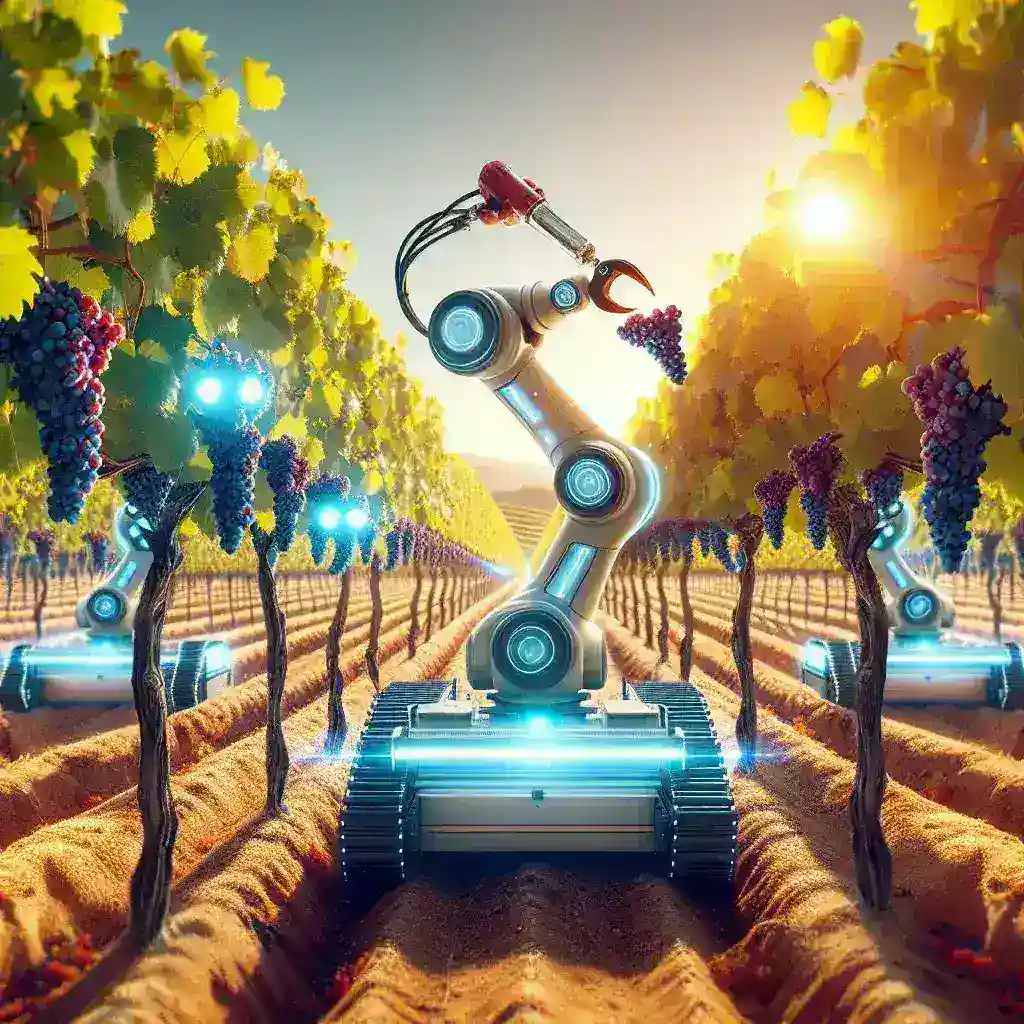Introduction
The wine industry in California has long been a cornerstone of American agriculture, representing not only a significant economic force but also a cultural symbol of the state. As the demand for quality wine continues to rise, vineyard operators are increasingly turning to innovative technologies to enhance productivity and sustainability. Among these advancements are AI guided robotic harvesters, which are optimizing vineyard operations and setting new standards in the field.
Understanding AI Guided Robotic Harvesters
AI guided robotic harvesters are sophisticated machines designed to automate the grape harvesting process. Utilizing advanced artificial intelligence algorithms, these robots can analyze vineyard conditions, assess grape ripeness, and determine the optimal time for harvesting. By integrating machine learning and robotics, they offer a level of precision and efficiency that was previously unattainable.
How They Work
The technology behind AI guided robotic harvesters involves several key components:
- Sensors: Equipped with various sensors, these machines collect real-time data about grape clusters, soil conditions, and environmental factors.
- Machine Learning: The data collected is processed using machine learning algorithms that help the robots learn and adapt their harvesting techniques over time.
- Navigation: GPS and mapping technologies allow the robots to navigate through the vineyard efficiently, minimizing damage to the plants.
Benefits of AI Guided Robotic Harvesters
Implementing AI guided robotic harvesters in vineyard operations offers numerous advantages that can significantly impact productivity, sustainability, and profitability:
1. Increased Efficiency
Robotic harvesters can work around the clock, harvesting grapes faster than traditional methods. This efficiency is particularly critical during peak harvest seasons when timing can significantly affect grape quality.
2. Cost Reduction
By reducing labor costs and minimizing the need for manual intervention, vineyard operators can significantly lower their overall expenses. The initial investment in robotic technology can lead to long-term savings.
3. Enhanced Precision
AI guided systems can precisely identify ripe grapes, ensuring that only the best fruit is harvested. This reduces waste and improves the overall quality of the wine produced.
4. Sustainability
With the ability to minimize soil compaction and reduce pesticide usage, robotic harvesters contribute to more sustainable farming practices. They enable vineyards to operate more efficiently while being mindful of environmental impact.
Historical Context of Vineyard Operations in California
The journey of viticulture in California began in the 18th century with the arrival of Spanish missionaries. Over the centuries, the industry evolved, with various waves of immigrants bringing their winemaking traditions and techniques. By the mid-20th century, California had established itself as a premier wine-producing region, renowned for its diverse grape varieties and innovative approaches to viticulture.
The Rise of Technology in Viticulture
As the demand for quality wine surged, vineyard operators began incorporating technology into their operations. The introduction of mechanized equipment in the late 20th century marked a significant shift, allowing for more efficient planting, irrigation, and harvesting. However, traditional methods still relied heavily on manual labor, which posed challenges in terms of consistency and labor costs.
Future Predictions for AI in Vineyard Operations
Looking ahead, the integration of AI and robotics into vineyard operations is expected to expand. As technology continues to advance, we can anticipate:
- More Sophisticated AI Algorithms: Future robotic harvesters will likely utilize even more advanced algorithms capable of making real-time decisions based on a wide array of data inputs.
- Wider Adoption: As costs decrease and technology becomes more accessible, we can expect to see a broader adoption among vineyards, including smaller operations that may have previously been unable to invest in such innovations.
- Integration with Other Technologies: Robotic harvesters may be combined with drones and automated irrigation systems to create a fully integrated vineyard management system.
Pros and Cons of AI Guided Robotic Harvesters
Pros
- Improved efficiency and speed of harvesting.
- Reduced labor costs and dependence on seasonal workers.
- Higher quality grapes through better harvesting accuracy.
- Lower environmental impact due to reduced soil compaction.
Cons
- High initial investment costs for technology.
- Potential job displacement for manual laborers.
- Maintenance and repair costs for advanced machinery.
Real Examples of Implementation
Several vineyards in California have already adopted AI guided robotic harvesters with impressive results:
Case Study 1: Napa Valley Vineyard
A prominent vineyard in Napa Valley implemented robotic harvesters during the 2022 harvest season. The vineyard reported a 30% increase in harvest efficiency and a 15% reduction in labor costs. Additionally, the quality of the grapes improved, leading to a more refined wine product.
Case Study 2: Sonoma County Vineyard
In Sonoma County, a vineyard utilizing AI guided technology was able to decrease its environmental footprint by reducing pesticide usage by 40%. The vineyard owner noted that the precision of the robotic harvesters allowed for better management of the ecosystem.
Cultural Relevance of AI in Agriculture
The integration of AI in agriculture, particularly in vineyards, is not just a technological shift but also a cultural transformation. As society becomes more aware of sustainability and food quality, the demand for innovative practices increases. AI guided robotic harvesters symbolize a bridge between tradition and modernity, allowing the wine industry to uphold its rich heritage while adapting to contemporary challenges.
Expert Opinions
Industry experts are optimistic about the future of AI in viticulture. Dr. Emily Johnson, an agricultural technology researcher, states, “The potential for AI in agriculture is limitless. It allows vineyards to be more precise in their operations and sustainable in their practices, ultimately benefiting the industry and the environment.”
Conclusion
AI guided robotic harvesters are revolutionizing vineyard operations in California, offering a glimpse into the future of agriculture. By enhancing efficiency, reducing costs, and improving grape quality, these technologies are not only reshaping the wine industry but also promoting sustainable practices that are crucial for the future. As vineyards continue to embrace innovation, the harmonious blend of technology and tradition will pave the way for a thriving, environmentally-conscious wine sector.

Leave a Reply